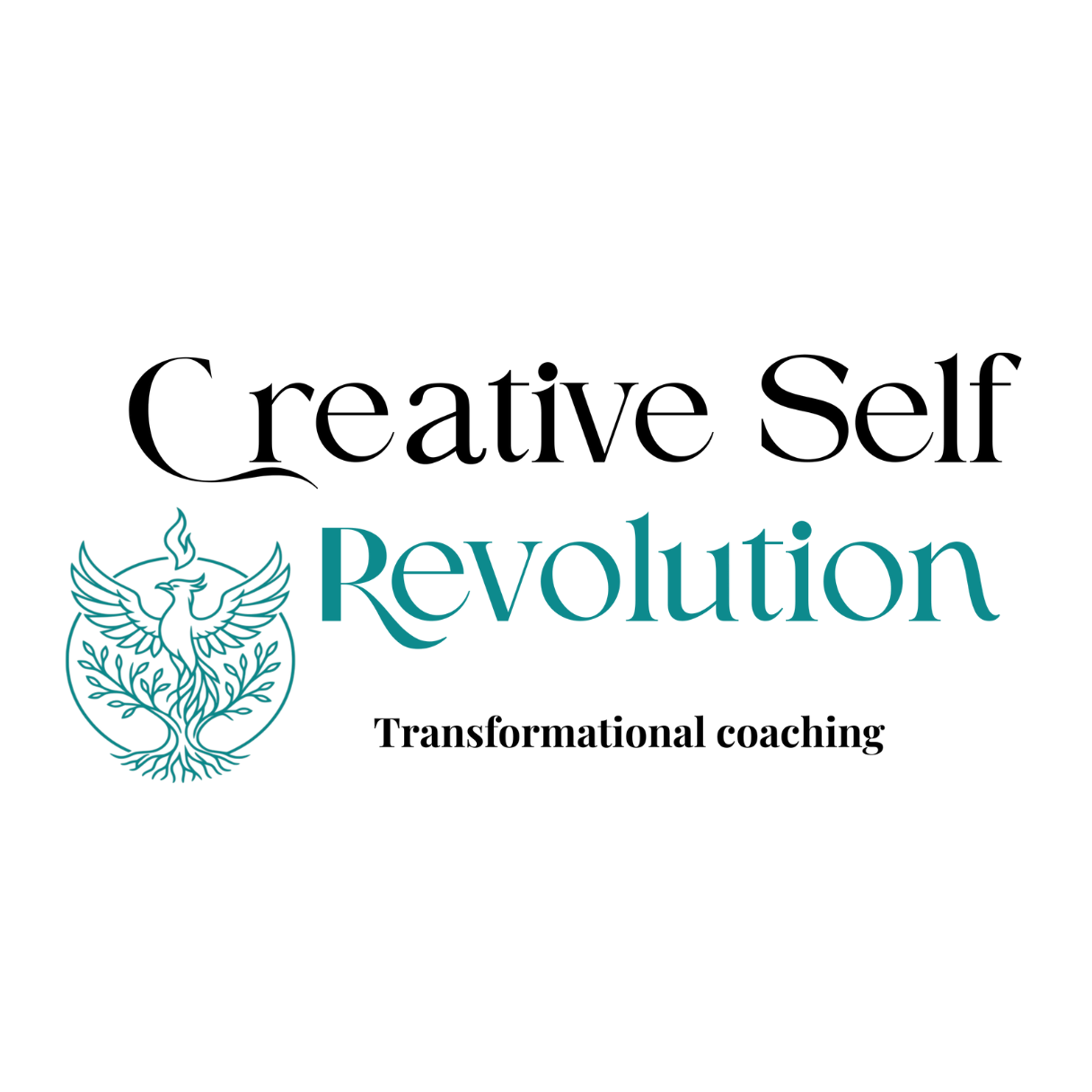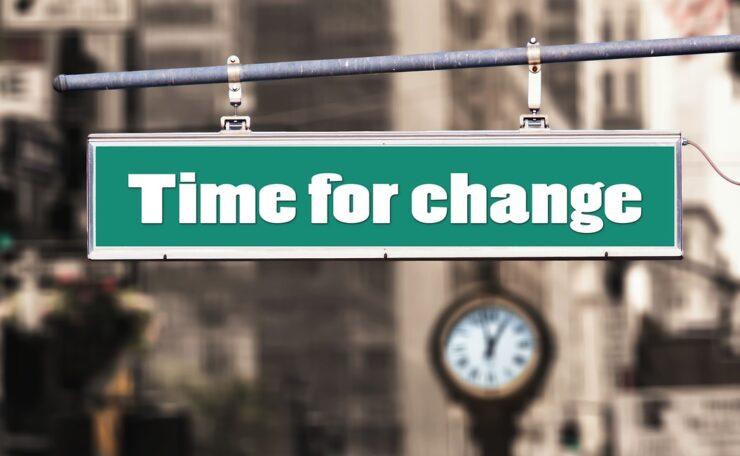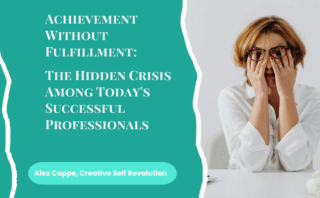
“The only way to make sense out of change is to plunge into it, move with it, and join the dance.” – Alan Watts
The email arrived on a Tuesday. After eleven years with the company, my coaching client Sarah was being let go—along with 30% of her division. The restructuring was effective immediately.
Two months later, she would describe this moment as “the best terrible thing that ever happened to me.”
What separates people like Sarah, who transform disruption into opportunity, from those who become permanently derailed by similar transitions?
The difference isn’t resilience. It isn’t optimism. And it certainly isn’t having a perfect plan.
The difference is understanding how to leverage the unique neurological and psychological advantages that only exist during major life transitions.
The Transition Economy: You’re Not Alone
We’re living in what some sociologists call “The Transition Economy.” The average American now experiences nearly twice as many significant life transitions than they did even 30 years ago.
Some statistics that highlight this shift:
- The U.S. Census Bureau reports that Americans now move an average of 11.7 times in their lifetime,with 37 million people relocating annually
- The Bureau of Labor Statistics found that workers now stay at each job for an average of just 4.1 years
- According to Pew Research, 67% of adults report having experienced at least one “major life disruption” in the past three years
- Harvard Business Review research shows that 35-50% of executives experience transition failure when taking on new roles
These numbers reveal something profound: life transitions have shifted from occasional disruptions to a fundamental feature of contemporary life. Being skilled at navigating transitions isn’t just helpful—it’s essential.
And today I want to give you some actionable tips today to help you navigate.
The Transition Advantage We’ve Been Missing
Here’s what most transition advice gets wrong: it focuses exclusively on minimizing pain and accelerating a return to “normal.” This approach misses the extraordinary opportunity that transitions create.
Brain activity changes during periods of significant life shifts. During the acute phase of a major transition, the brain exhibits patterns similar to those seen during critical developmental windows in childhood—periods when the brain is extremely receptive to new learning and reorganization.
In other words, major transitions temporarily return your adult brain to a state of heightened plasticity that rarely exists during periods of stability. So, basically, you can return to the way you absorbed information at age 6. It’s an incredible opportunity.
Most of us waste these windows trying to rush back to comfort rather than leveraging them for transformation. As a life reinvention coach, I help people take advantage of these windows, and witness amazing transformations.
The “Strategic Reinvention” Framework
Rather than offering platitudes about “embracing change,” I want to share specific frameworks for leveraging transitions that are based on neuroscience, behavioral psychology, and my own experience with life reinvention coaching clients.
I call it “Strategic Reinvention”—a deliberate approach to transition that transforms disruption into directed, fulfilling growth.
This is about strategic action that works with how your brain actually functions during transitions.
Phase 1: Strategic Destabilization (First 30 Days)
Most advice tells you to maintain as much stability as possible during transitions. The Strategic Reinvention approach differs: while a few anchors are necessary, this approach deliberately amplifies certain aspects of the change to trigger enhanced neuroplasticity.
My coaching clients who strategically introduced additional small changes during a major transition – like altering their morning routine or taking a different route to common destinations – adapt more successfully than those who cling to familiar patterns.
Technique To Try: Pattern Disruption Mapping
Let’s put this into practice now. Instead of focusing only on the transition that’s been forced upon you, take inventory of your daily patterns and deliberately disrupt 2-3 additional routines. This isn’t random disruption—it’s strategic.
First, identify routines in three categories:
- Anchoring Routines – keep these stable
- Growth-limiting Routines – deliberately change these
- Potential Routines – new patterns that you want to establish
For example, if you’ve lost your job, you might keep your morning exercise routine stable (anchoring), change how you structure your workday (disrupting), and establish a new routine of professional networking (potential).
Phase 2: Directed Neuroplasticity (Days 31-90)
Once you’ve strategically destabilized, the next phase leverages the heightened neuroplasticity that transitions create. This is where Sarah, from our opening story, separated herself from others facing similar job loss.
While most people focus on replicating their previous situation as quickly as possible, Strategic Reinvention targets your enhanced learning capacity toward specific skills and mindsets that will serve your future self and help you create a life that’s more fulfilling.
Research shows that new skills acquired during periods of transition are learned up to 200% faster and retained much longer than those acquired during periods of stability. This is similar to how children rapidly acquire language—transition creates a temporary return to a more plastic neural state.
Technique To Try: Transition Learning Acceleration
Identify one complex skill that would be valuable in your desired future but has seemed too difficult to master in the past. Commit to 15 minutes of daily deliberate practice during this neuroplasticity window.
The key difference from ordinary skill development is to combine this practice with what neuroscientists call “state priming”—deliberately evoking the emotional state of your transition immediately before practice sessions. This makes all the difference.
Before each practice session:
1. Spend 2 minutes writing about your current transition
2. Identify one specific emotion you’re feeling about the change
3. Connect that emotion explicitly to your learning (“I’m channeling this uncertainty into learning”)
This technique leverages research showing that emotional arousal enhances neuroplasticity. By explicitly linking your transition emotions to your learning, you’re basically “tagging” these skills as high-priority for your brain, accelerating your ability to learn.
Phase 3: Identity Reconstruction (Days 91-180)
One aspect of transitions that a lot of my coaching clients struggle with is how transitions challenge our identity—our fundamental sense of who we are. When you lose a job, end a relationship, move to a new place, etc, you lose not just external circumstances but elements of how you define yourself.
This can be incredibly disorienting if approached with a negative mindset.
However, people who explicitly address identity shifts during transitions show significantly better psychological outcomes than those who focus exclusively on practical considerations or “just getting through it”.
Technique To Try: Identity Core Sampling
The following technique helps you distinguish between peripheral and core aspects of your identity during changes.
1. List 20 responses to “I am a…” (teacher, parent, creative, etc.)
2. For each identity marker, ask: “If this changed, would I still fundamentally be me?” Sort into “core” and “peripheral” identity elements.
3. For peripheral elements affected by your transition, create specific “Identity Bridge Statements” that connect past and future selves.
Here’s an example of one of my client’s Identity Bridge Statements:
“I am evolving from being an employee on autopilot without purpose to a creator who blazes his own path.”
This technique helps resolve “identity discontinuity”—the jarring sense that you’re becoming a different person during transitions.
The golden key is that by creating explicit bridges between past and future selves, you maintain psychological continuity while still embracing transformation. This has made a huge difference for my life reinvention coaching clients.
“How long will this take?”: The Transition Timing Revelation
One of the most common questions about transitions is “How long will this take?” Most advice offers vague reassurance rather than concrete information. In our impatient contemporary world, not knowing the answer to the timeline is more upsetting than in times when the pace of life was slower.
From my experience with coaching clients and research on life transitions, here’s what I’ve roughly determined:
Ending Phase: 1-3 months of psychological separation from the previous state
Neutral Zone: 3-6 months of ambiguity and reconceptualization
New Beginning: Around month 7, emergence of stable new patterns
Understanding this helps you avoid the “transition panic” that occurs when the process takes longer than expected.
You’re not stuck—you’re exactly where you should be. And if your timeline is a little different than what I’ve outlined, that’s totally fine too. Everyone processes in their own time.
The Transition Community Factor
A major predictor of positive transition outcomes is social connections and community.
This isn’t just about having supportive friends and family. Research specifically highlights the importance of connections with others who are either:
- Currently navigating similar transitions, or
- Have successfully navigated similar transitions in the past
These connections can provide “transition mentoring”—guidance specifically related to the psychological and practical aspects of your particular change.
People with strong transition-specific social connections often adapt twice as fast and report higher satisfaction than those navigating changes in isolation.
A life reinvention coach, such as myself, is another resource to consider. Life reinvention coaches can help you through rough moments, keep you on track with an action plan, offer you ongoing support, and help you create a life you’re much more passionate and excited about. Even with a strong social network, sometimes you don’t get the direct support on these issues that you need without specifically seeking a coach.
Technique To Try: Transition Council Formation
Rather than relying on existing relationships for transition support, strategically assemble a “Transition Council” of 3-5 people with specific roles:
- The Navigator: Someone who has successfully completed a similar transition (provides practical guidance)
- The Witness: Someone going through a parallel transition now (provides mutual understanding)
- The Anchor: Someone who knew you before the transition and supports your core identity (provides continuity)
- The Vision Holder: Someone who exemplifies aspects of who you’re becoming (provides inspiration)
- The Life Reinvention Coach: Someone who can help with all the changes and uncertainties of transitions (provides support and structure)
From Success to Fulfillment: The Hidden Opportunity in Disruption
One of the most profound opportunities transitions offer is the chance to close what I call the “Success-Fulfillment Gap”—this is the often significant distance many people experience between conventional achievements and genuine wellbeing and life satisfaction.
The factors that create authentic fulfillment such as: meaningful relationships, autonomy, purpose, and growth, often differ from traditional success markers like: status, wealth, and recognition.
Transitions create rare moments when these two paths can be realigned. When you’re successful and fulfilled, your life suddenly becomes so much richer, so much more satisfying, something you’re excited about.
The Reinvention Revolution: Your Next Steps
As you navigate your current transition—whether it’s changing careers, rebuilding after a relationship ends, creating a new home, or adapting to an empty nest—remember that you’re not just managing change: You’re participating in a fundamental human process that has transformed lives throughout history.
The discomfort you feel isn’t a sign that something’s wrong—it’s evidence that you’re in the middle of one of the most amazing growth opportunities that adults experience.
To help you with your reinvention process, I’ve created a free resource called “The Reinvention Blueprint.” This powerful tool helps motivated people transform transitions from crises into catalysts for genuine reinvention with lives they can’t wait to wake up to.
Download your free “The Reinvention Blueprint” PDF here and begin transforming disruption into your greatest advantage.
I also offer one-on-one coaching. Visit my site if you’re interested in applying.
I hope this has given you some useful tips and perhaps relieved some anxiety over whatever transition you’re in the midst of. Your reinvention awaits!

Alex Cappe of Creative Self Revolution is a life reinvention coach, speaker and creative, who has garnered over 1 million YouTube views and spoken at organizations like Microsoft and the International Coaching Federation. She guides people with paper-perfect success that feels hollow, or people going through a life transition, into genuinely fulfilling lives. Her innovative 6-step methodology helps people break through invisible limitations and create clear pathways to fulfillment and joy.




How useful!
Happy you thought so! It’s a cool reframe.